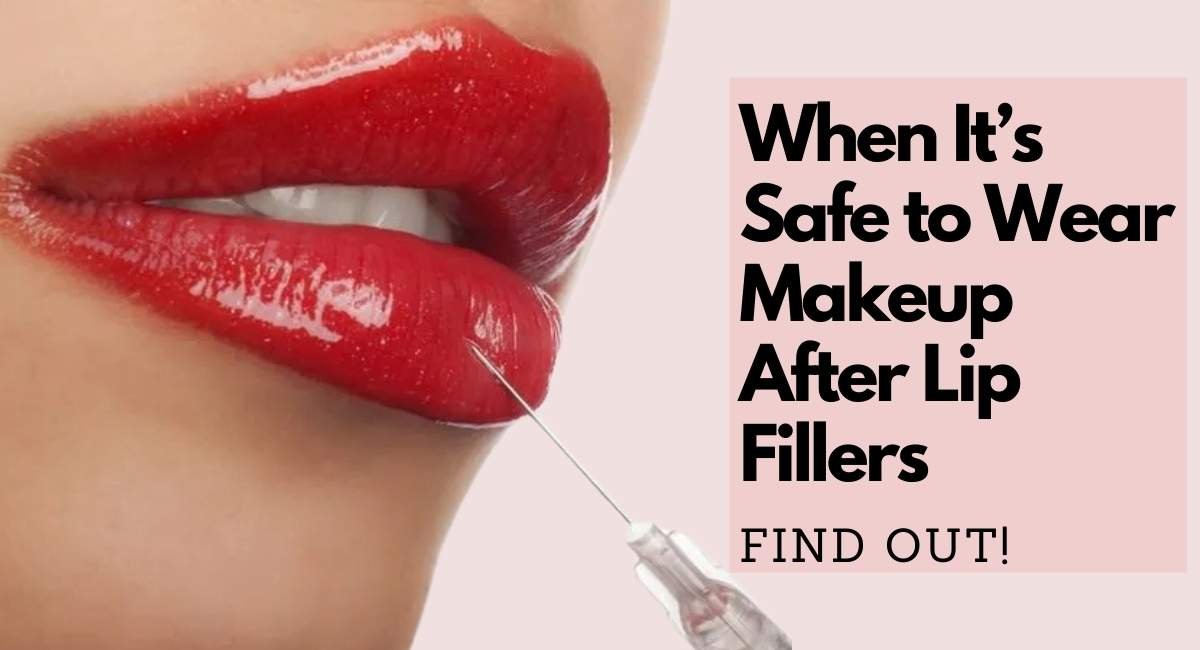Lip fillers have become a popular cosmetic treatment that enhances lip fullness, improves symmetry, and reduces fine lines. Many individuals undergoing this procedure are eager to know when it’s safe to wear makeup after lip fillers, especially lipstick, on their enhanced lips. Understanding the right time to apply makeup and how to care for your lips is key to achieving the best results.
This comprehensive guide covers everything about makeup after lip fillers, from proper aftercare to tips for preventing complications. It also covers methods to protect your lips during makeup application and healing. It highlights common mistakes to avoid and recommends the best lip care products for optimal results.
What Are Lip Fillers?

Lip fillers are injectable treatments made with hyaluronic acid (HA) to enhance lip size and shape. They provide a temporary solution for fuller, more defined lips or correct lip asymmetry. Hyaluronic acid is a natural substance that attracts moisture, helping to plump and hydrate the skin. After getting lip fillers, many people wonder when it’s safe to wear makeup after lip fillers. The procedure is minimally invasive; most people can return to their routine quickly afterward.
Things You Should Avoid After Fillers

Several important things to avoid after receiving fillers are: These precautions help ensure your fillers last longer, provide optimal results, and reduce the risk of complications, such as infection.
Exercise
It’s essential to avoid exercise for at least 24 hours after getting fillers. Exercise increases blood flow, which can cause the filler to move to areas that weren’t intended. This can make the fillers less effective and, in some cases, cause uneven results.
Makeup
Refrain from wearing makeup for at least 24 hours following the procedure. Applying makeup can pressure the treated areas, potentially spreading the filler to unintended spots. Additionally, makeup can come into contact with the injection sites, increasing the risk of infection.
Alcohol
Avoid consuming alcohol for at least 24 hours after receiving fillers. Alcohol can increase the likelihood of bruising at the injection sites. It’s best to wait until the filler has fully settled before drinking alcohol to reduce any unnecessary risks.
The Sun
While protecting your skin from the sun is always important, it’s especially crucial after getting fillers. Stay out of direct sunlight for at least four hours after treatment to prevent irritation or damage to the treated areas.
Avoid More Skin Treatments
After receiving fillers, it’s essential to refrain from other skin treatments. This includes avoiding saunas, spas, or any treatments that involve heat, pressure, or direct contact with the treated areas, as these could interfere with the filler’s results.
Sleeping in Treated Areas
Avoid sleeping or resting on the areas that have been treated with fillers. The pressure from your pillow or body can cause the filler to shift, leading to uneven results. Sleep on your back with your head slightly elevated to protect the treated areas.
Timing Your Makeup Application after Lip Filler Treatment
After a lip filler procedure, it’s essential to know when it’s safe to apply makeup to avoid interfering with the healing process and the results.
First 24 Hours: Avoid Makeup Completely
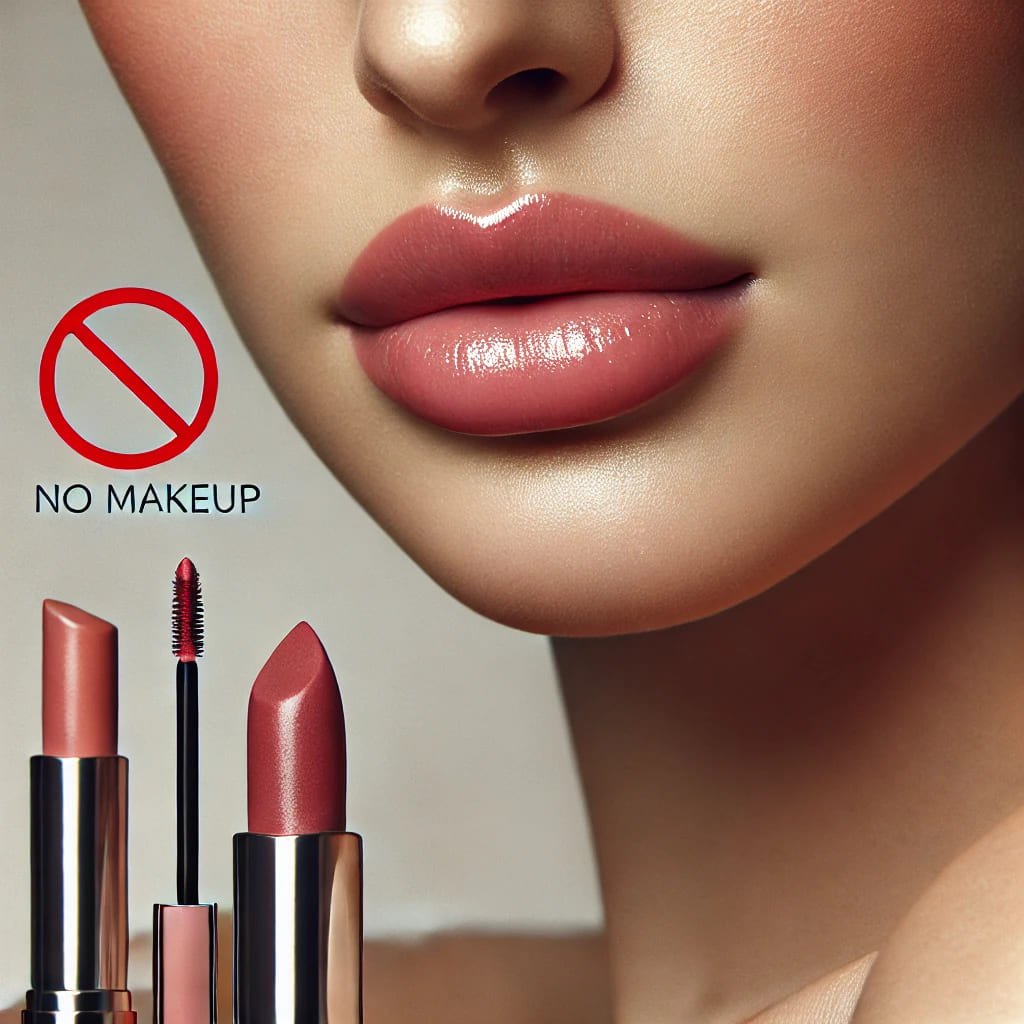
Your lips are especially sensitive in the first 24 hours after the procedure. It’s crucial to avoid applying makeup, particularly products like lipstick, lip gloss, or lip liner, as they can irritate the freshly treated area. This period allows the filler to settle and helps reduce the risk of infection or complications.
After 24 Hours: Gradual Return to Makeup
Once the first 24 hours have passed, you can reintroduce makeup cautiously. Opt for gentle products like hydrating lip balms or tints that provide a subtle touch of color without irritating. Compared to more intense options like matte lipsticks, these products are less likely to affect the filler or disrupt the healing process.
Key Tips for Makeup Application after Lip Filler Treatment
- Be Extra Gentle: Use a light touch when applying makeup to your lips. Avoid any pressure or rubbing, as the delicate tissue is still healing. Gently dab or swipe the product on to prevent any disruption to the filler or irritation to the treated area.
- Opt for Hydrating Products: Choose nourishing lip balms, glosses, or tints enriched with hydrating ingredients like hyaluronic acid, vitamin E, or shea butter. These ingredients keep your lips moisturized and help calm and protect the healing tissue, preventing dryness and discomfort.
- Avoid Matte Formulas and Long-Wear Products: While matte lipsticks and long-lasting formulas can be tempting, they can dry and interfere with healing. Stick to lighter, hydrating options for the first few days to maintain moisture and avoid irritation.
- Allow Full Healing Before Using Intense Products: Though you can apply makeup gently after 24 hours, it’s best to wait until your lips are fully healed before using more intensive products like lip liners, bold lipsticks, or heavy lip glosses. This ensures the filler settles appropriately and the healing tissue isn’t disturbed, making makeup after lip fillers safer and more effective once your lips fully recover.
- Always Use Clean Makeup Tools: To minimize the risk of infection, sanitize your makeup brushes before applying makeup. Ensure that any brushes, sponges, or applicators you use are thoroughly cleaned before each use. This helps prevent bacteria from being transferred to the sensitive lip area during healing.
Protect Lips from Makeup After Fillers
Taking good care of your enhanced lips ensures long-lasting results and smooth healing. Here are some tips on how to protect your lips when applying makeup:
Use a Lip Primer
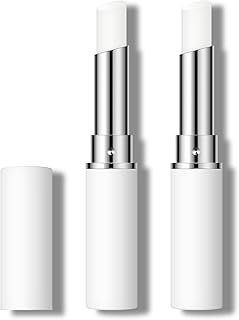
A lip primer helps create a protective barrier between the makeup and sensitive lip tissue, minimizing irritation and keeping your lips hydrated.
Go for Non-Comedogenic Products
Opt for non-comedogenic makeup products without ingredients that could cause irritation or clog pores. These products are less likely to cause inflammation or other complications, helping preserve the smooth appearance of your lip fillers.
Avoid Straws
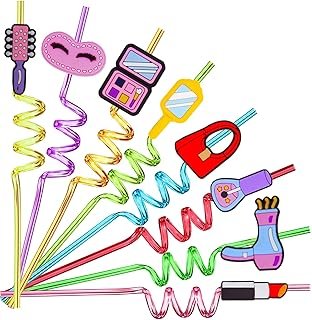
For the first few days after treatment, avoiding using straws is recommended. Sipping through a straw can create pressure on the lips, potentially affecting the placement of the lip filler or causing discomfort.
Swelling and Bruising After Lip Fillers: Tips for Managing Swelling and Bruising
Swelling and bruising are common and temporary side effects of lip filler injections. Typically, swelling will peak within the first 24-48 hours and start to subside in the following days. Bruising may last up to a week but is usually mild. Managing these symptoms effectively is vital to post-treatment care, especially before applying makeup after lip fillers.
Quickly managing swelling and bruising can speed recovery. Ice, elevation, rest, and pain relievers help reduce swelling, while warm compresses, hydration, and proper nutrition support healing.
Here’s how to manage swelling and bruising effectively.
Apply Ice or Cold Compress
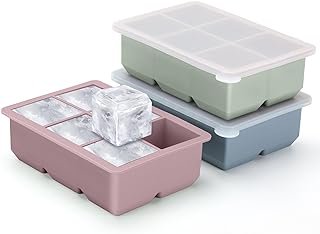
Applying ice or a cold compress immediately after an injury and during the first 24–48 hours helps reduce swelling and ease pain. The chilly constricts blood vessels, limiting blood flow to the area and preventing further swelling. For effective results, wrap ice in a cloth or use a cold pack, applying it for 15–20 minutes at a time, several times a day.
Elevate the Affected Area
Elevating the injured area above heart level, especially in the first 48 hours, helps reduce swelling by allowing fluids to drain away from the injury. Lying down and propping up a swollen leg or foot with pillows or resting an arm on cushions encourages better circulation and fluid movement.
Compression
Compression helps control swelling and prevent it from worsening, especially within the first 48 hours. An elastic bandage, like an Ace bandage, can provide support and compression to the area, but be cautious not to wrap it too tightly, as it could impair circulation.
Rest the Injured Area
Rest is crucial after an injury. It allows your body to focus on healing and prevents further strain on the affected area. Avoid putting weight or stress on the injury, and take breaks from physical activities to avoid exacerbating the swelling or bruising.
Use Over-the-Counter Pain Relievers
If bruising or swelling causes discomfort, over-the-counter pain relievers such as ibuprofen or acetaminophen can help manage pain and reduce inflammation. Always follow the dosage instructions on the label and consult a healthcare provider if you have concerns or underlying conditions.
Warm Compress After 48 Hours
Once the initial swelling has gone down after 48 hours, applying a warm compress can help increase blood flow to the injured area, promoting healing and reducing stiffness. To help with recovery, use a warm compress or heating pad for 15–20 minutes at a time.
Massage (After Swelling Reduces)
Once the swelling has decreased, gentle massage can improve circulation, reduce stiffness, and aid healing. Use soft, circular motions around the bruised area, but avoid massaging directly on the Bruise to prevent irritation.
Keep an Eye on the Bruise
Bruises typically change color as they heal, transitioning from red/purple to blue/green and eventually yellow. Monitoring the Bruise helps you assess the healing process, and if the swelling worsens or the pain intensifies, it’s essential to seek medical attention to rule out any underlying issues.
Stay Hydrated and Eat Well
Proper hydration and nutrition are essential to support the body’s healing process. Foods rich in vitamin C, like citrus fruits and vitamin K, found in leafy greens, can help reduce bruising and promote collagen production, aiding tissue repair.
Avoid Smoking and Alcohol
Smoking and excessive alcohol consumption can delay the healing process by impairing circulation and increasing swelling. Avoiding these substances helps your body recover more efficiently and reduces the risk of prolonged bruising and inflammation.
How long after lip filler can I wear makeup?
You can begin wearing makeup after 24 hours, but wait until the swelling subsides (usually 3-7 days) to use heavy makeup products like lipsticks or lip glosses.
What are the best makeup products to use after lip fillers?
After lip filler treatments, opt for hydrating lip balms, lip tints, and other gentle products. Avoid lip plumpers and exfoliating products.
How can I protect my lips after lip fillers?
Use a lip primer to protect the delicate lip tissue, opt for non-comedogenic makeup to avoid clogging pores and irritating your lips, and keep your lips hydrated with nourishing balms.
How can I manage swelling and bruising after lip fillers?
To reduce swelling and bruising after lip filler injections, use ice packs in the first few hours, elevate your head, and avoid strenuous activities.

